Author, Ana Maria MUNTEANU,
Ovidius University
Introduction
The world of composer, professor, conductor and pianist Dinu Ghezzo is a “bridge of dimensions”. Just as Greek Aeneas whom he did not hesitate to revive him in the contemporary world marked by its technological sublime[1] – a tentative to use myth as an orienting strategy rooted in our history – he defined himself in relation to space, migration and diversity.
He was professor of music and Director of Composition Studies at New York University, Steinhardt School of Culture, Education and Human Development. Dr. Ghezzo’s career ranging from theory, composition and conducting, to performance, anthropological research[2] and international project management, reflects the philosophy promoted by the distinguished American academic institution according to which “society is a form of communication”.
“I began with serious attempts at twelve-tone and aleatoric works in Bucharest and Los Angeles, and early I also developed an interest in electro-acoustic effects and the computer as tools for composing. As time went on here in New York, I gradually shifted my interest to a wider variety of styles, and as of the 1980s, I became involved in multimedia projects both as a composer and stage director”[3].
He was more than just a teacher, artist or composer – he was a promoter of multiple ties between arts and technology in response to deep mutations occurring in the American and global society. As a composer, he started from the centrality of computer during the creative process and evolved towards “a poetics of space”, having a ”cultural relevance augmented with dynamic information” within continuous processes of transformations[4]. He developed a reflexive relationship between arts, techniques and
[1] the multimedia project Voyages of Aeneas
[2] in U.S., Italy, France, Germany, Spain, Poland, Romania, Hungary, Greece, South Korea, Japan and others
[3] Nancy Bogan, The Cries of Cassandra,
[4] Lev Manovich, The poetics of Augmented Space: Learning From Prada, 2004
technology – in the sense given by Mumford[1]– and adopted a phenomenological method that allowed him to position himself in the field of contemporary music freely in-between laboratory and sound texture of real contexts, “minimalism” and “post-minimalism”, “new simplicity” and “new complexity”, the artificial musical mind and the “world music”.
Early in the 70s he focused on some key aspects for an enhanced balanced relationship between education, composition and musical life. He became aware of the necessity of dialogue between various groups and musical schools following the orientation towards otherness in American universities. From this reflection resulted an intercultural architecture of artistic webs able to integrate global flows and to interfere with more complex agenda.
He compared music with a “movement of movements” and also with light, embodying these metaphors into creative processes and projects’ mobile architecture. So his perspective on musical architecture of human contexts is a transposition of Le Corbusier’s ideas on the relationship between light and architecture.
“ Light has not just intensity, but also a vibration, which is capable … of
giving a three-dimensional quality to a flat surface.”[2]
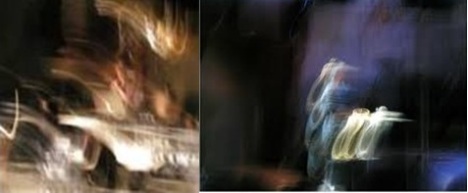 Photo Dinu Ghezzo-Friends 2003 Photo Dinu Ghezzo- Friends 2008
Photo Dinu Ghezzo-Friends 2003 Photo Dinu Ghezzo- Friends 2008
The concept of contemporary music festival was conceived as a prism reflecting musical, science, and artistic ideas, experiments and emotions into a micro-scale cosmopolitan community. Following this path he became a “transnational cosmopolitan”[3] directing his life to “an encounter of people, as well as cultures and continents”[4], through a dynamic exploration of “ virtual, actual, fictional, architectural and projected”[5], in performance, film, photography, contemporary dance, poetry, installations and digital art.
[1] Louis Mumford, Technics and Civilisations, University of Chicago press, edition 1987.
[2] Le Corbusier, Made of Light. The Art of Light and Architecture, 2005, p.40
[3] Terhi Rantaanen, A transnational cosmopolitan.An interview with Uf Hannerz, An interview with Ulf Hannerz, Global Media and Communication .2007/3/ 11, http://gmc.sagepub.com/
[4] idem
[5] Obelleiro, Julio, Folded Light, http://www.julioobelleiro.com/folded-light.
Life and career
Dinu Ghezzo was born in Tuzla a village situated near Constantza- the ancient Greek colony Tomis – on the Black Sea coast, in a multi-ethnic region in south-east of Romania. He was the second son of an Italo- Austrian father[1] and of a mother of Greek origins. He showed a passion for playing with sounds from an early age. He later told that he was fascinated by the rhythm of waves and the ruins of ancient Greek colony of Tomis, recalled with nostalgia in “Echoes of Tomis”, a modern melopea for saxophone and piano created in 1992. During childhood and adolescence the interest in Greek mythology increased, braiding with life tales, narrated over and over, waiving as a single unforgettable sound of memory.
The stories were often related to the sea, like the birth of his maternal grand-mother on a boat on the road from Istanbul to Constanta, or his father’s reports on cities and ports from his frequent departures and comings as ship commander. While attending Mircea cel Batran high school in Constanta he took piano lessons with his aunt Erfili, who graduated the Conservatory in Athens. While sitting at piano before a classical score, listening to a Bach’s Fugue or a Beethoven Sonata, she used to map from the memory the image of an intense concert life in Athens in the 30s providing models to follow in a future carrier. In addition to this familiar universe, the experience of living in the real Constanta was a daily plunging within linguistic and cultural diversity, similar to those described by Canetti in “Die gerette Zunge”[2].
In early 60s, after completing one of the oldest high schools in Romania he was “equipped” with a rigorous “baggage” in hard sciences (mathematics and physics) having also a good knowledge of classical languages (Latin and Greek). He continued to study music – theory, conducting and composition – at the Conservatory of Bucharest, where he met his wife Marta – conductor and professor of music – he became assistant professor at the chair of composition after graduating in 1968. In 1969 he left communist Romania together with his wife Marta Arkossy Ghezzo – currently professor at Cunny University[3]– and went to Los Angeles. There he completed a doctorate in music and
[2] Canetti, Elias, Die Gerettete Zunge, Hnser, 1994
[3] Marta Árkossy Ghezzo, Professor of Music at Lehman College (CUNY), and recipient of the Excellence in Teaching Award, Teacher of the Year 2010. She taught at the Romanian Academy of Music (Bucharest), California Institute of the Arts (Valencia), Queens College (CUNY), Kingsborough College (CUNY), and New York University.Dr. Ghezzo delivered master classes and lectures in the United States (University of Illinois, New York University, Louisiana State University, University of Stony Brook, CalState Northridge, Tulane University, John Jay College), and abroad (Università della Musica, Roma; Università Ca Foscari, Venezia, Italy; Conservatorio “A. Steffani,” Castelfranco Veneto, Italy; Conservatory of Music “Niccolò Piccinni,” Bari, Italy; Rubin Academy of Music, Jerusalem, Israel; Sibelius Conservatory of Music, Helsinki, Finland; Pusan National University, Korea; Ewha University, Seoul, Korea; Conservatory of Music, Odessa, Ukraine; and Constanza Music Festival, Romania), http://internationalartseducatorsforum.com/faculty-bios/marta-ghezzo/
technology at University of California in 1973, following which he moved to New York – at that time a metropolis with cosmopolitan spirit and energy, which largely reflected his expectations. Going back in time one might ask how did the young 30 year old composer managed so quickly to convince these important personalities of the American music stage on his own potential and value, coming from an eastern European country and having no recommendations. The only plausible response would be the common language, philosophy and tools of new music that he proved along with his talent, originality and determination. Going further, he early distinguished himself for his ability to manage complex projects , to be a “man in charge” :
” For the third summer in a row, the Village will play host to what seems likely to become a prominent feature in the musical life of this country ….. It’s the New York University Forum for New Music, which will take place from June 15-30 with lots of concerts…….Dinu Ghezzo, the man in charge of this forum, has an enthusiasm for the program that will stimulate the musical appetite of anyone who cares at all about what’s going on in music today……….Although the event does for the most part take place in the Village, the selection of performers is anything but parochial. One of the many good ideas of this Forum is to take players and composers from all over (US, Canada, and Europe) and invite them here…. Probably the greatest strength of this kind of series is that it avoids the danger of presenting only one musical point of view…”[1] .
In New York he met three major figures of American music- John Cage, Milton Babbitt and Leo Kraft, and also collaborated with distinguished artists like Lorry Walfisch and Sergiu Comissiona as part of the activities of “George Enescu” Foundation in New York [2] . For Cage – a disciple of Arnold Schonberg – music was linked to the idea of chance (in the probabilistic sense) as a result of “ a purposeless play” (“Experimental Music” Conference supported in 1957). As a professor at CUNY and Princeton he had an outstanding influence on contemporary music concepts and research. Cage was a writer as well ( “Silence”-1961, “ A Year from Monday”-1968, “M”-1973, “Empty Words” – 1979, 1983) and an illustrator, developing the text’s visual dimension. But his international reputation remained related to his long term collaboration with choreographer Merce Cunningham at Black Mountain College, since 1948. The new paradigm is configured in correspondence with Piere Boulez in Paris, with Robert Samuels and Canadian semiologist J. J.
Nattiez through a systematic survey of music nature which he considers to be spiritual, a “ wake-up to real life that goes through the silence experience “. His creation “4‘33” partly unleashed at the begining of the decade an ever unparalleled scandal, the performer’s 273 seconds of silence in front of the concert piano, being pure appearance, a convention interrupted by press and public’s outrage reactions, first because they paid a ticket to hear music and the press was in need of a ready to be commented on “object”; the code breaking of the artistic event represents a sense of time reversal in a civilization of speed, achieving an “absolute zero,” a reversal point of what we understand by this art in western culture. Milton Babbitt, located at
[1] The Villager NYC: “ A New Music Fest in the Village” 1983.
[2] Dinu Ghezzo being the vice-president they kept alive the memory of George Enescu in American space, along with the pianist Lorry Walfisch(president) and conductor Sergiu Comissiona (vice -president).
Cage’s opposite pole, adopted a total (ordering) serialization – synonymous with rational control over the act of composing music and sonorous result, whereby perception is dissociated from emotional impact. To compose a music piece becomes a matter of logic within variables-undertaken through “Three Compositions for Piano” (1947) two years ahead of Oliver Messiaen “Modes de valeurs et d‘intesites” and five years ahead of Pierre Boulez in “The X Polyphony.
Babbitt considered contemporary music as a contribution to intellectual rather that art history – “ Contemporary Music Composition and Music Theory as intellectual History” (a lecture in 1972). His mathematical-composer approach is entirely abstract – marked by a Second Viennese School influence, and has a remarkable impact on contemporaries: it receives the Pulitzer award for the “ scientific and seminal contribution of his work, and he is appointed consultant professor at RCA’s (Narkill Synthesizer) research group at Princeton.
Babbitt is considered “the early guru of the electronic music” managing to create in 1959 “Columbia-Princeton Electronic Music Center”, to develop intellectual and technological dialogue with his distinguished colleagues at Princeton, Harvard, Columbia, and Julliard School, incorporating in this dialogue results of collaboration with the poet John Hallander, a Yale professor, in a notable argument effort “on the univers vs plurivers” (a conference which was presented at Emerson Bicentennial, apud Jason Gross. Perfect Sound Magazine). Babitt and Hallander created the sonic concept which doesn‘t correspond to acoustic parameters nor to audibility but it represents a text dimension “highly, sonically organized” – the sonicity being a meta level of connection of music and poetry , an analog structuring.
If between the two outstanding American contemporary music figures decks are finally cut, Leo Kraft, a student of Nadia Boulanger, formed in that Parisian “ esprit de finesse,” will not only be a personal model for Dinu Ghezzo, but also a steady collaborator. Together they co-founded several musical ensembles, produced 1st auditions of contemporary music on stages of Broadway, at Carnegie Hall and Lincoln Center resulting in a strong interest for contemporary music in 70s-80s America. It was a precious partnership during a crucial period for the Romanian-born composer‘s integration in American cultural space that Ghezzo appreciated and developed over time as a human quality expected to balance between “social contexts and absolute music”[1]
[1] Henry Kingsburry, Music as Cultural System: Structure and Process in an American Conservatory, Indiana University Press, 2001
Ghezzo’s Discography of CDs[1]
Much involved in national and international music projects, he was founder and president of Musica Nueva Malaga Festival (Spain), ICIA Inc. (International Composers and Interactive Artists), President of NABLA Ensemble, in Residence at Univ. of Rome II, “Tor Vergata” (Italy), founder and director of the ICIA Inc. (Int’l Composers & Interactive Artists), INMC Inc. (International Music Consortium), the Assisi International Music Days, among others, and is past director of ANMC Inc., Todi International Music Days, Gubbio Festival, Molfetta Festival, CIPAM Festival in Montevarchi (Italy), Constanta International Music Days, The Week of Romanian American Music in Oradea, Romania, etc.
He was a recipient of a honorary doctorate from Ovidius University, Constanta (Romania), and of many awards, prizes, residences, and commissions: Fulbright Senior Scholar (2006), visiting composer at the American Academy in Rome, composer-in-residence at Dresden Festival and guest composer at the Berlin Hochschule der Künste (Germany), the Royal Conservatory in Brussels, Belgium, the Hungarian Arts and Letters Academy in Budapest, the Jerusalem Music Academy (Israel) and the Music Academy in Krakow (Poland), CAPS Award – New York, George Enescu Awards, ASCAP Awards, NYSCA and NEA Grants, leading international ensembles and soloists, and residencies as guest composer, conductor and performer.
He has conducted the NYU Orchestra, the Washington Square Orchestra, the Black Sea Symphony (ac. Constanta Symphony), Oradea Philharmonic, Timisoara Symphony Orchestra, the Bucharest Music Academy Orchestra. He was founder and co-director with Leo Kraft of the New York Repertory Ensemble, and founder and co-director with Jack Kreiselman of the NYU Contemporary Players, appearing at Lincoln Center, Alice Tully Hall, Carnegie Hall, Weill Hall, at Monday Evening Concerts, Univ. of Illinois, Univ. of Michgan, etc. His music is published by Editions Salabert of Paris, by Musica Scritta, the AIM Press (Italy), TGE (Milan, Rome), the Calabrese Brothers and by Seesaw Music Corporation, New York. He serves on many
Dinu Ghezzo’s Discography of CDs[1]
First live/interactive performance on Internet coordinated by Dinu Ghezzo and John Gilbert in 1998 :
1998 Spring Marathon. Ghezzo, Gilbert & Friends
Cassandra I, II anIII
6-7 pm NYU Students & Faculty works:Web Transmission from MonacoMonaco (7 minutes):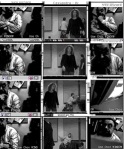 CASSANDRA: ON THE ROCKS, NO SALT CASSANDRA: ON THE ROCKS, NO SALTa very luxurious and unctuous Palace play by Jenny Mc Carthy —————————————————— NYU: Ken Valitsky …………………. I am I, she said I am, for Clarinet & digital delay Dr. Esther Lamneck, Clarinet Annie Cohen …………………. Moving On, for Oboe, Bsn, Cello Sierra Robinson – Oboe, Yung-Ling Chen – Bassoon, Daphne Carr – Cello Jeff Dick ……………………….. Solution Christina Rogers, Flute Kerry Ashforth …………………….. Clockmaker’s Funeral Kate Anderson, Piano Gaute Solaas…………………… Impromptu Jack Wallrath, Trumpet and Mr. Solaas Kaye Mallonga ……………….. Moody Cello Justin Kantor, cello, Kaye Mallonga, piano Eric Satie ………………….. Correspondence Luis Serdoura (Portugal), Piano Witold Lutoslavski ……Two Folk Songs, for Solo Guitar |
7-8 pm NYU & FRIENDS WebTransmission from Denmark: (7 minutes) Tom Beyer ……………laces (in 3 mvts) 1. I Have Been, 2. Here, 3. In the Future. Rene Mogensen, Soprano Saxophone at DIEM (Danish Institute for Electroacoustic Music), and Tom Beyer in New York. —————————————- – On Stage at NYU:Laura Kessler ………………… Somebody’s Child, for Flute, Synth, Dancers & Tape Laurie Behunin, Dance, Linda Past, Actress, Anne Epperly, Flute, Ron Mazurek, Synth, Tom Beyers, Drums Ji Young Jung……………….. GARAK, for Solo Clarinet Augusta Read Thomas ……. KARUMI, for Solo FluteEwa Rogacka – Flute John Cage …………………… from “The Seasons” Luis Serdoura (Portugal), Piano Ron Mazurek ………………… In Strange Tongues Ron Mazurek, Synthesizer Dafna Naphtali & group …… MiniCollision with Tom Beyer, Percussion & Dafna Naphtali, Voice & Electronics Vladimir Spitsberg …………. Visions de Miro, for tape, piano, prep. drums & Slides Jan Trojanowski – Percussion, Drums, Mr. Spitsberg – Piano |
8-9.20 pm INMC & Friends:-Web Transmission from Vancouver: Dance Improvisation ………… “A Tapestry of Voices” Choreographed Duet …………. “Alert”University of British Columbia Multimedia Program at University of British ColumbiaParticipants: Lisa Naugle, Coordinator, Choreographer, dancer, video Maryann Yeomans, Technical Support, Web Design Leigh Wolf, musician, poet Rachael Pope, dancer Marion Landers, dancer Sandra Samson, dancer Kristine Richmond, dancer -NYU & Friends Two Short Theatrical Pieces for Solo Percussion J. Rebotier – The Box and Bongo O by R. Sierra Loong Hsing Wen …………….. Two Essays for Vibraphone Sharon Huang Hsin-Hui – Percussionist Dejan Kovacevic ……………. New Piece for a quartet Bill Colangelo, Nathaniel Townsley, drums, Mr. Kovacevic, and bass player Adam Kaczynski …………… Shape, for Two Pianos Mr. Kaczynski & George Fisher |
Ghezzo and the West East Dialogue
First in Los Angeles and then in New York, Dinu Ghezzo managed to become a “suture point”[1] between two cultures. He was presented by Los Angeles Time as an „American-Romanian” composer from the very first concert live appearance in 1973. His musical language was “particulary striking in its use of Greek (Tracian) bagpies, tarogato, rhapsodic guitar and dirty saxophone and its evocation of Hungary, Romania and Macedonia in improvised electronic contexts”[2]. This identification was very productive over the years and defines a first level of intercultural logic, that of the self construction. Some marks of Romanian ethnic music are recognizable in pieces like „ The legend of The Fir Tree”,” Leru-i Ler”, „ Five Village Scenes”, „ Wind Rituals”, The sunlight poems” ( inspired by Lucian Blaga’s poetry ), „Doina”, „ December Epitaphs, “Rituals of Life”, “Love and Death”- For the performance of the last one he invited Lia Lungu, a folk singer from Banat together with Timişoara Ensemble in New York.
A second relevant aspect is related to the intercultural learning. American musicians playing Ghezzo’s compositions have learned to play the popular instruments from the region : for instance, the American clarinetist Esther Lamneck who played the tárogató / töröksíp/ taragot in Ghezzo’s „ December Epitaphs” dedicated to 1989 revolution’s victims , first auditioned in New York, then in Paris, where Dinu Ghezzo was in residence at Sorbonne and after on the stage of Bucharest Opera House with an international cast of which were part Wendy Luck-flute, Ron Mazurek-accordion, Tom Beyer-percussion, Jeanann Seidmann- violin, and others. After playing in Ghezzo’s creations Lamneck – called by New York Times, “an astonishing virtuoso”- created herself music for tarogato and inspired other composers – Larry Austin, Ron Mazurek, Robert Rowe, Robert Cogan and others.
Dr. Esther Lamneck
The third dimension of interculturality is a meta-level, a philosophy embodied within performative acts according to which music is a dynamic forging of the “encounter of knowledge and cultures”, a place where “a hole world teaches and learn” [3]. A review by Radio Split (1989) after a concert in Croatia eulogizes his creation
[1] Stuart Hall, Who needs ’ identity? in P.du Gay, J. Evans,P. Redman, Identity. A Reader, Sage Publications, Thousand Oaks, New Dehli, London, 2000. p 17.
[2] in Twentieth Century Music ‚99 Records”
“Ostrom” for its ”very fine interactive different sections as reflections of different cultures of the world molded in a singular statement”.
A forth cross-cultural dimension was generated by the sense of harmony and collaboration – developed by Gregory Bateson[1] – avoiding some negative effects of artistic individualism and biases generated by competition. A long term collaboration with leading Romanian born personalities of the international artistic and intellectual life – Sherban Lupu, Mirel Iancovici, Lorry Walfisch, Aurel Stroe, Miriam Marbe, Cornel Taranu, Violeta Dinescu, Emil Sein, Andrei Deleanu, Sebastian Danila, Andrei Marinescu, Ioana Ieronim, Saviana Stanescu, Liliana Iorgulescu, Lia Lungu and the American group of Friends- John Gilbert, Ron Mazurek, Esther Lamneck, Marta and Christine Ghezzo, Lisa Naugle, Tom Beyer, and others – created an “ideoscape”[2], a web of events, a node of relevant singularities, diversity, energy and creative resources.
After 1989 Dinu Ghezzo was actively involved into a west-east dynamic interface. International events, cooperation between universities, ensembles and contemporary artists networks, contemporary music festivals, artists in residence and visiting travels for professors – created a framework of intercultural dialogue that widely influenced the artistic intellectual community.
In the first years of the fall of communist regimes in Central and Eastern Europe this flow made visible endless blocks of social life, biases overlapping the transition and questioning the validity of transition models[3]. In 1986 Claudio Magris[4] anticipated the risks and proposed a pilgrimage along the Danube aiming to redesign the travel’s architecture – working similarly to a light-Space Modulator Mobile by Làszlö Moholy-Nagy – to reconnect the “two Europes” politically and socially divided and to rebirth a common regional identity. Dinu Ghezzo’s approach of the post communist decade was to promote a trans-cultural awareness.
[1] Gregory Bateson, Steps to an Ecology of Mind, Chandler Publications for Health Sciences, Jason Aronson Inc. , 1987 http://www6.ufrgs.br/horizon/files/teoria2/bateson.pdf.
[2] Arjun Appadurai on sameness and distinctiveness, in A.Appadurai, Disjunction and Difference in the Global Cultural Economy, http://www.intcul.tohoku.ac.jp/~holden/MediatedSociety/Readings/2003_04/Appadurai.html
[3] Thomas Carothers, 2000, The End of the Transition Paradigm, Journal of Democracy,13,No.1, January, 2002.
[4] Claudio Magris, Danubio, Garzanti, Milano, 1987.
March 2002 Tour of Poland-Germany-Italy HOLL, Nelson-Atkins Addition
Dinu Ghezzo&John Gilbert, directors Light CMU Architecture,2013
With hosts:[1]
Dr Lisa Naugle, Univ.of California, Irvine /Guest performers:
John Crawford, Vancouver Canada / Luigi Morleo, Ricardo Santobony, Italy
The Istituto Europeo di Design, Rome /Beate Gabriela Schmidt, Flutes, Berlin
Luigi Vernieri, director /Ensemble MW2, Krakow
Adam Kraczynsky, director
Constanta Symphony Orchestra Le Corbusier Vibratory effect
At the State Lyric Theater, Space Modulator 1948 unstable black&white combos
Constanta, Romania & ICIA, New York
Sep. 28th. 2007
DINU GHEZZO – Conductor
GUIDO ARBONELLI – Solo Clarinet (Italy)
International Composers and Interactive Artists
[1] Licht CMU Architecure, 2013, http://cmuarch2013.wordpress.com/category/light/#jp-carousel-104781067
The innovation that defined him in many aspects was the use of ancient myths not in the way made famous by the structural anthropology or tradition itself but as a heuristic logic, a mode to face uncertainty using musical resources available in diverse contexts, both real and virtual. So he extensively used myths to produce a “vibrating effect”: from a black and white “state” of mind to a shared western memory. From there, a movement towards a different futurefollowed by a return to a better present…
Thus, an important dimension was represented by the widespread media coverage of the projects in Romania since 1991. Many art critics and journalists like Dumitru Avakian, Luminita Vartolomei, Cristina Sirbu, O. Serban-Parau, as well as others, commented favorably his contributions as a composer and director of projects at Romanian-American and international festivals. These reviews have configured the reception pattern of innovative concepts and events building bridges between American and European contemporary music and post-communist Romania where Romanian-American relations have undoubtedly been a ferment of opening.
Finally, a new cross-cultural valence is now being made by his students in composition classes, young musicians from USA, China, South Korea, Japan, participating in concerts with first auditions of their creations or in international workshops. This workshops included masters’ students in Anglo-American Studies and Communication at the Faculty of Letters, University Ovidius Constanta. In April 2008 the Romanian Cultural Institute in NY celebrated him with a concert entitled “Dinu Ghezzo: Memories and Celebrations of 38 years of Romanian-American collaborations”, attended by Tom Beyer, Joseph Church, Robert Rowe, Ron Sadoff (Academy Awards winner for music), Wendy Luck, Pedro da Silva, Sebastian Danila, Christine Ghezzo, and as special guests Ciugureanu Adina (then dean at the University Ovidius) and venerable musician Lory Walfisch-President of the NY Foundation Enescu – Sonata for piano, op. 24 with a brilliant interpretation of the final movement.
The multimedia project The Return of Aeneas had a particular resonance in the Romanian space in 2003. The Return of Aenea – a “multimedial, multiracial, multi-religious” performance was based on the poem “Birthing Aenea” by Christine Ghezzo . The music presented at the event was created by Dinu Ghezzo, Tom Beyer, Felix Pastor, Akiko Asai, Chien Nien Chen, Rama Gottfried, Ron Mazurek, John Gilbert, Young Mi Ha, Thom MacFarlane and Fred Popovici. The formula chosen for this evening included dancers of the Oleg Danovski Ballet Theatre – coreography by Lisa Naugle – orchestra, and chorus of Opera Constanta and digital technology – all these components being co-ordinated by Dinu Ghezzo.
Two major Romanian music critics, Oltea Serban Parau and Dumitru Avakian, expressed at the time positions that synthesizes on one hand, a dilemma, and on the other hand a sense of belonging to the global village, that a digital version of Aeneas seeded in the local culture connecting it to diasporas, and, as a result of interaction, generated new representations of space, distinct from the “international” logic of institutions :
“.. The concept of “multimedia” applied to a mythological themes may seem at first sight disconcerting. But the performance itself gave all the expected responses to any questions about this production. How could a musical background bearing of so many different ways of thinking to create the minimum unit necessary to carry a show? Even
more than the stage direction had to incorporate several types of theatrical language to build it combining video and choreography, orchestral discourse, chorus and solo cells – like soprano voice, piano, or a combo electronic? The theme fortunately found support in the multidimensional approach of stage.” [1]
“Of course, is visible that this “Return …” has an autobiographical character, Aeneas representing for us an anguish tireless mythological emblem, a constant search, search of itself, over a vast spiritual, inter-religious, interdisciplinary journey that Dinu Ghezzo began more than three decades ago. “Reinventing Aeneas but keeping the same offensive spirit of digital technology on our limitations, Dinu Ghezzo infuses strength and flexibility into the local cultural context, with both pragmatic and creative American spirit … Now as in other times, Dinu Ghezzo remains that dynamic spirit which knows to mobilize resources and awareness”.[2]
The poem Birthing Aeneas created in 2003 by his daughter Christine succeeds to
capture the reflections of this spirit[3].
…..
You can hear him
Singing though cypress branches in Sardegna,
Or temple bells in Korea.
See his reflection
In windows of skyscrapers,
On painted monastery walls of Moldova.
Feel him,
In the waters of Greece,
Or within the arms of a lover.
He is there
reminding you that you are all reflections
of each other.
Separated only by degrees
of language
and generations.
He is asking you to recognize a prayer,
Regardless of the name of God.
He is asking you to walk
to the bridge he built,
And to cross it. …….
[1] http://agenda.liternet.ro/articol/447/Dumitru-Avakian/Reintoarcerea-lui-Aeneas.html, august 2003
[2] http://agenda.liternet.ro/articol/435/Oltea-Serban-Parau/Un-proiect-multiartistic-si-multinational.html
[3]Christine Ghezzo, Birthing Aeneas, http://inmc.org/birthing_aeneas.html
Instead of conclusion
Professor Ghezzo was a “man of cross-roads” able to translate technological opportunities and dynamic over-layers of space into a human sensitive milieu – a “web of life”. Working with metaphors and dialoging with the artificial mind was for him an exciting experience conditioned on connecting it to a more complex definition of human “nature”, music, arts, including technology itself. For sure he similarly worked as an intelligent “interface design agent”, with n points of intersection west/east , past/future, arts/technology, singularity/diversity while remaining consequent to the “village” spirit.
Unexpected death in December 2011 put an end to this creative energy whose significance can be better framed through concepts launched by Hannerz[1], like “cultural complexity”, “interconnectedness”, “flows”, “networks” and “hybrid spaces”. He embodied the profile of a cosmopolitan transnational man and of an outstanding composer and artist .
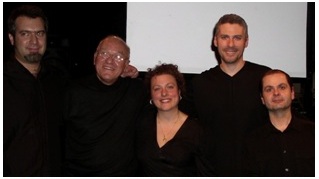 Dinu Ghezzo with his daughter Christine and Friends
Dinu Ghezzo with his daughter Christine and Friends
The image above is posted on composer Orlando Legname’s blog. It captures a happy moment after a concert and is accompanied by one of the most moving confession made by a disciple and collaborator being also a sort of commitment:
“Those who knew this fantastic musician and human-being understand what a lively personality is. I first talked to Dinu on the phone in 1995
when I was applying for doctoral programs in the U.S. After I moved to this country, he became a special mentor and a friend. At New York University, we started working together in several projects. Until 2011, we had performances in Spain, Italy and Romania.
Now I am working on keeping his projects and music going”.
The challenge will be to maintain complexity and specificity of the human creation and to value singularities as well as group dynamics in a global world unified by technology .
[1]Christine Ghezzo, Birthing Aeneas, http://inmc.org/birthing_aeneas.html
Abstract
Dinu Ghezzo was professor emeritus at NYU, at the Steinhardt School of Culture and Human Development, the Department of Music and Performing Arts. D. Ghezzo studied composition, conducting, and theory of music at the Romanian Conservatory in Bucharest, earned a PhD in composition and technology at UCLA (1973). He was founder and co-founder of Assisi International Music days, Gubbio festival, CIPAM festival in Montevarchi, Constanta International Music Days, The Week of Romanian-American Music in Oradea. He was a recipient of an honorary doctorate from Ovidius University Constanta (Romania) and of many other awards, prizes, residencies and commissions: Fullbright Senior Scholar (2006) visiting composer at the American Academy in Rome, Composer in Residence at Dresden Festival, and Guest Composer at the Berlin Hochschule der Kunste. He promoted the dialogue between the American and Romanian composers, professors, artists, poets belonging to all generations, in the frame of reference of his activity at NYU as director of studies in composition, and also as director of American New Music Consortiun and ICIA (International Composers and Interactive Artists). He also contributed to the change of mentality, providing new music opportunities for young Romanian musicians and audiences in accordance with the spirit of the cosmopolitan “village” as an open culture seen in the Romanian institutional context during the process of post-communist transition.



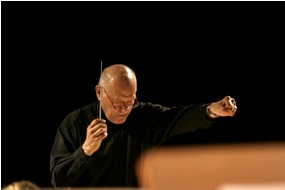
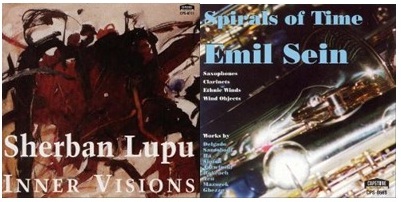


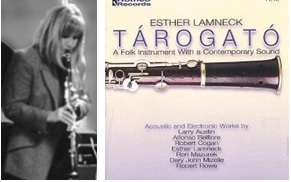

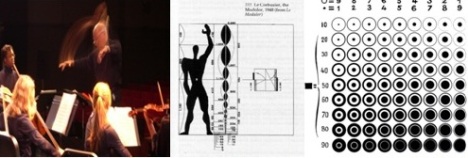

Dear Ana Maria and colleagues: Many thanks for the very in depth look on my musical and artistic life. I am very grateful and very inspired to continue my work. Yes, we need this kind of recognition, but much more, we need to see that what we do is not spent on vain ……
Congratulations for the major effort. Please cont on my support and promotion.
With much gratitude,
DG
Even so, most experimental musicians should they stick with
it for long enough End up as electronic artists.
Know everything there is to trance and techno music.
You can look at Part Two of the Cold Blooded EP here:.
A person essentially assist to make seriously posts I’d state. That is the very first time I frequented your web page and thus far? I surprised with the analysis you made to create this particular publish incredible. Wonderful task!
Remarkable things here. I am very glad to see your post.
Thanks a lot and I’m taking a look ahead to touch you. Will you please drop me a e-mail?
That is a good tip particularly to those fresh to the
blogosphere. Short but very accurate information… Many thanks for sharing
this one. A must read article!
I constantly spent my half an hour to read this weblog’s content every
day along with a mug of coffee.
I think the admin of this web site is truly working
hard in favor of his site, as here every information is
quality based information.
What’s up, yes this article is genuinely good and I have learned lot of things from it concerning blogging.
thanks.
Every weekend i used to pay a quick visit this site, because i wish for enjoyment,
for the reason that this this web site conations genuinely fastidious funny
data too.
Remarkable issues here. I am very happy to peer your article.
Thank you a lot and I am taking a look ahead to touch you.
Will you please drop me a mail?
Great info. Lucky me I ran across your website by accident (stumbleupon).
I have book marked it for later!
I used to be recommended this blog via my cousin.
I am no longer certain whether this publish
is written through him as no one else understand such exact approximately my problem.
You’re amazing! Thank you!
Hi there, I do think your website might be having web
browser compatibility problems. Whenever I look at your
web site in Safari, it looks fine but when opening in IE,
it has some overlapping issues. I simply wanted to
provide you with a quick heads up! Other than
that, wonderful website!
What a information of un-ambiguity and preserveness of precious knowledge about unexpected emotions.
Hi there, just became aware of your blog through
Google, and found that it’s truly informative. I am going to watch out for brussels.
I will be grateful if you continue this in future. Numerous people will be benefited from your writing.
Cheers!
Hello, I wish for to subscribe for this blog to take newest updates,
therefore where can i do it please assist.